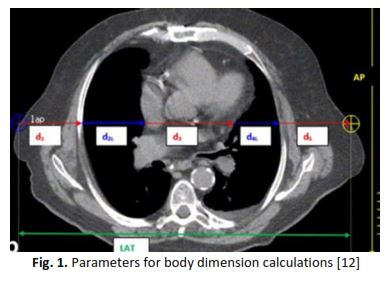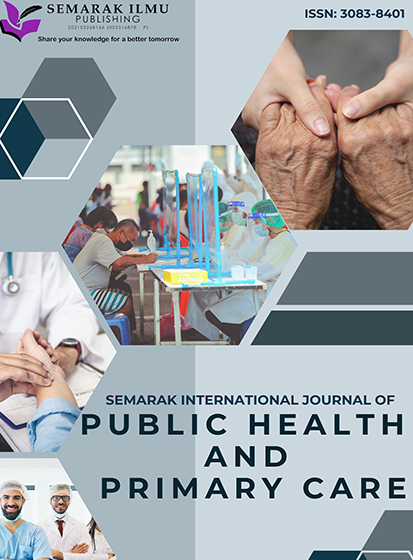Comparison between Size-Specific Dose Estimate (SSDE) Based on Water Equivalent Diameter and Effective Dose in Adult Computed Tomography (CT) Thorax, Abdomen and Pelvis (TAP)
DOI:
https://doi.org/10.37934/sijphpc.4.1.113Keywords:
CT TAP, effective dose, SSDE Dw, radiation doseAbstract
Computed Tomography (CT) scan examination the most predominant source of medical radiation exposure towards patients globally contributing to 44% of the global effective radiation dose. In Malaysia, the prevalent usage of CT scans to aid diagnostic procedures among patients have raised concerns about the impacts of increasing use of ionizing radiation for diagnosis. This study compares the patient effective dose (ED) and the patient size specific dose estimate based on water equivalent diameter (SSDE Dw) in CT Thorax-Abdomen-Pelvis (TAP) procedure.A prospective study was conducted at a hospital in Wilayah Persekutuan Kuala Lumpur. The study utilized the 128-slice Siemens SOMATOM Definition Dual Source CT scanner. Study parameters of: CTDIvol, DLP, patient antero-posterior (AP) and lateral (LAT) diameter were retrieved from Picture Archiving and Communications System (PACS) for calculations of patient effective diameter, effective dose and SSDE Dw for each respective patient involved in the study. The data obtained were numerically coded and analyzed using SPSS version 29 for Windows 11. Independent T-Test was employed to compare the difference between the means of patient effective dose and SSDE Dw.The results revealed a significant difference between values of patient effective dose and SSDE Dw among patients undergoing CT TAP procedure. The calculated patient effective dose for CT TAP imaging procedure were 11.15 ± 3.3 mSv. The SSDE Dw values in patients who underwent CT TAP imaging procedure were 16.54 ± 3.2 mGy.The radiation dose calculation purely based on effective dose for CT TAP procedure will result in underestimation of patient radiation dose as compared to calculation of patient radiation dose using SSDE Dw. Future study should consider a larger sample size with inclusion of multiple healthcare institutions around Malaysia and a more advance and accurate calculation method for patient radiation dose.









